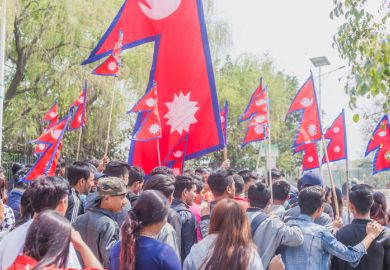Moves by the Malaysian government to continue with a controversial affirmative action policy for its pre-university programme have reignited a debate over the fairest ways of admitting students to higher education.
The education minister, Maszlee Malik, announced last month that the number of places on the government “matriculation”, or pre-university, programme would increase by 60 per cent to 40,000, but 90 per cent of these places would still be reserved for “bumiputeras”, or the Malay indigenous population. The remaining 10 per cent of places are open to non-bumiputeras, predominantly Chinese and Indian minorities, who tend to perform better academically.
The matriculation programme was introduced in 1998 to create more opportunities for the Malay majority to enter higher education. The race-based quota was launched in 2003.
However, there have long been calls for the government to abolish the policy, with critics highlighting that it is discriminatory and does not target the most disadvantaged students.
Students are able to take an alternative national pre-university programme, known as the Malaysian Higher School Certificate (STPM), which is open to all Malaysians. However, the matriculation programme is an easier and faster route to university. Meanwhile, pre-university programmes at private colleges are expensive.
There are concerns that the recent government announcement will reduce STPM graduates’ chances of entering higher education if the total number of places in public universities remains the same.
Peter Chang Thiam Chai, an academic at the University of Malaya’s Institute of China Studies, said that while “Malay representation must be protected, the 90:10 formula has had serious fallout”.
“It has severely alienated the minorities and adversely impacted Malaysia’s public university academic standards,” he said.
“The need for affirmative action, and the delicate balancing act required, was vulnerable to the vicissitudes of Malaysia’s racialised politics, and the new Harapan government has not found of a way out of this dilemma.”
Koh Sin Yee, senior lecturer in global studies at Monash University Malaysia, said that the quota meant that the matriculation programme “doesn’t offer the same degree of opportunity to all who…are underprivileged”, adding that the policy “does not seem to be clearly needs-based nor merit-based”.
“Increasing the placement numbers but keeping the 90:10 quota could result in a larger number of bumiputera students opting for matriculation rather than STPM,” she said.
“In the long run, this could result in two issues: first, higher numbers of bumiputera matriculation graduates who may not be sufficiently equipped or prepared for university education; and second, higher numbers of bumiputeras entering the workforce at least a year earlier than their non-bumiputera counterparts. There seem to be compounded issues further down the line that have not been addressed.”
Lee Hwok-Aun, senior fellow and coordinator of the Malaysia Studies Programme at ISEAS-Yusof Ishak Institute in Singapore, said that “the rigour, breadth and quality of matriculation programmes must be raised” and that the system must eventually “settle on one common entry qualification, in place of the current unequal alternatives”.
“The stark and complicated reality is that bumiputeras depend on the matriculation system, and any abrupt change to the quota, or even dismantling of this parallel pre-university channel, is untenable socially and politically,” he said.
Register to continue
Why register?
- Registration is free and only takes a moment
- Once registered, you can read 3 articles a month
- Sign up for our newsletter
Subscribe
Or subscribe for unlimited access to:
- Unlimited access to news, views, insights & reviews
- Digital editions
- Digital access to THE’s university and college rankings analysis
Already registered or a current subscriber? Login








